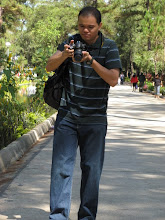Wednesday Liturgy: Follow-up: Kneeling at the Final Prayer
ROME, JULY 12, 2011 (Zenit.org (http://www.zenit.org)).- Answered by Legionary of Christ Father Edward McNamara, professor of liturgy at the Regina Apostolorum university.
Related to our comments regarding kneeling for the final prayer (see June 28), a reader from Bhopal, India, wrote, "I am glad you explained the meaning of postures during the liturgy. I still have a doubt in my mind regarding 'kneeling.' I very well remember that the Second Vatican Council banned kneeling at Mass. I am surprised to see that you reintroduce it in your writing. We never had another council to decide on changes to be made. I believe that nobody has the legal right to go against the council decision. Could you please explain?"
I fear that our reader was misinformed regarding the decisions of Vatican II. The only conciliar statements remotely related to postures are Nos. 30-31 of Sacrosanctum Concilium:
"30. To promote active participation, the people should be encouraged to take part by means of acclamations, responses, psalmody, antiphons, and songs, as well as by actions, gestures, and bodily attitudes. And at the proper times all should observe a reverent silence.
"31. The revision of the liturgical books must carefully attend to the provision of rubrics also for the people's parts."
This is hardly carte blanche to abolish kneeling, a longstanding practice which was substantially reaffirmed and mandated in the reformed rites. It would appear that it is yet another example of reforms supposedly mandated by Vatican II which cannot actually be traced in its texts.
I therefore did not "reintroduce" kneeling for the simple reason that it has never been abolished. It might be possible that in some places it has fallen into disuse because ministers gave the faithful incorrect instruction. In some cases the lack of kneeling is the result of so-called church renewals in which the kneelers were removed.
This does not appear to be the case in India, although it might be true for some regions. Indeed, priests from that country assure me that it is common practice to kneel throughout the Eucharistic Prayer and for the Lamb of God.
It is also possible that a bishops' conference in a mission country could decide that kneeling might be interpreted negatively in the context of a particular nation's spiritual patrimony. In such a case the episcopal conference could ask approval from the Holy See to change the postures used by the faithful during Mass.



0 Comments:
Post a Comment
<< Home